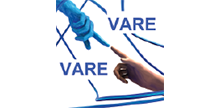The impact of new technologies in design education
- a Nora Argelia Aguilera González
- bFernando Suarez-Warden
- cHector Nahun Quintero Milian
- d Samira Hosseini
- aSchool of Architecture, Art and Design. Tecnologico de Monterrey. Mexico
- b School of Engineering and Sciences. Tecnologico de Monterrey. Mexico
- c Innovation and Educational Technology CEDDIE North Region. Tecnologico de Monterrey. Mexico
- d Writing Lab, TecLabs, Vice-rectory for Research and Technology Transfer. Tecnologico de Monterrey.
Ave. Eugenio Garza Sada 2501, Monterrey 64849, NL, Mexico
Cite as
N.A. Aguilera González, F. Suarez-Warden, H.N. Quintero Milian, S. Hosseini (2018). The impact of new technologies in design education. Proceedings of the 4th International Conference of The Virtual And Augmented Reality In Education (VARE 2018), pp. 38-45. DOI: https://doi.org/10.46354/i3m.2018.vare.007
Abstract
Technology has made profound changes even in education. New educational trends include technology to facilitate the teaching-learning process. The design aims to develop solutions for the needs of the human being. The use of technology allows these solutions to be carried out effectively. Digital technology has been integrated into visual communication and new digital techniques have emerged for education. It is becoming easier to acquire software to create 2 dimensional (2D) and 3 dimensional (3D) representations. However, this does not mean that by using pure technology effective designs are made, since it is essential to have knowledge of elements and principles of architecture and design in order to make a useful design. The objective of this article is to demonstrate that an educational design course equipped with digital technologies including Augmented Reality (AR), Virtual Reality (VR) and 3D printing can be proposed for the second-semester students of architecture career to help them develop a better understanding of how different designs relate to the needs of the users.
References
- Ching, Francis D.K. 2015. Architecture. Form, Space, & Order. Canada. Ed. Wiley Fonatti, Franco. 1988. Principios elementales de la forma en arquitectura. Gustavo Gili. España.
- Fonseca, D., Villagrasa, S., Martí, N., Redondo, E., & Sánchez, A. 2013. Vizualization methods in architecture education using 3D virtual models and Augmented Reality in mobile ans social networks. Procedia – Social and Behavioral Sciences. pp. 1337-1343.
- Hashimoto A., Clayton M. 2009. Visual Design Fundamentals: A Digital approach. Course Technology. 3° Edition. U.S.A. pp. 1-52.
- Howeidy, D., Arafat, Z., 2017. The Impact of Using 3D Printing on Model Making Quality and Cost in the Architectural Design Projects. International Journal of Applied Engineering Research. Volume 12, No.6. pp. 987-994.
- Ma, D., Gausemeier, J., Fan, X., Grafe, M. 2011. Virtual Reality & Augmented Reality in Industry. New York. Springer.
- Ma, D., Gausemeier, J., Fan, X., Grafe, M. 2011. Virtual Reality & Augmented Reality in Industry. New York. Springer.
- Malamed, Connie. 2015. Visual Design Solutions: Principles and Creative Inspiration for Learning Professionals. Ed. John Wiley and Sons. pp. 13-15.
- Saffer, Dan. 2010. Designing for Interaction: Creating Innovative Applications and Devices. USA. New
Riders. pp. 2 - 22. - Sabouri, M., Samie Yousefi, M., Samie Yousefi, F. 2015. Role of Urban sculptures in Beautification and Improvement of quality of urban spaces (case study: Fuman County). Cumhuriyet University Faculty of Science Science Journal (CSJ), Vol. 36, No: 3. pp. 4070-4082
- Shahhosseini, Elham. 2015. The Role of Urban sculpture in shaping the meaning of identity in contemporary urban planning. International Journal of Science, Technology and Society. Vol. 3, No. 2-1, pp. 24-26.
- Schreyer, A. 2016. Architectural Design with SketchUp. Ed. Wiley. Canada
- Wiberg, Mikael. 2015. Interaction Design Meets Architectural Thinking. Interactions IX. Volume XXII.2 pp. 60 – 63.
- Wu, H., Lee, S.W., Chang, H. & Liang, J. 2013. Status, opportunities and challenges of Augmented Reality in education. Computers and Education, vol. 62, pp. 41- 49
- Zevi, B. 1999. Leer, escribir, hablar arquitectura. Ed. Apóstrofe. España. pp. 15-103
